ASUS P8Z68-V PRO Review: Our First Z68 Motherboard
by Ian Cutress on May 11, 2011 3:13 AM EST- Posted in
- Motherboards
- Asus
- Z68
ASUS P8Z68-V PRO: Board Features
| ASUS P8Z68-V PRO | |
| Market Segment | Performance |
| CPU Interface | LGA 1155 |
| CPU Support | i3/i5/i7 Sandy Bridge |
| Chipset | Z68 |
| Base Clock Frequency | 80.0 MHz to 300.0 MHz in 0.1 MHz intervals |
| DDR3 Memory Speed | 1333 MHz by default, 800-2400 MHz supported |
| Core Voltage | Auto, offset or fixed modes, 0.800 V to 1.990 V in 0.005 V intervals |
| CPU Clock Multiplier | Dependent on CPU |
| DRAM Voltage | Auto, 1.2 V to 2.2 V in 0.000625V intervals |
| DRAM Command Rate | Auto, 1T-3T |
| Memory Slots |
Four 240-pin DDR3 DIMM slots in dual-channel Regular unbuffered DDR3 memory Up to 32GB total supported |
| Expansion Slots |
3 x PCI Express 2.0 x16 slots (x16/x0 or x8/x8, final x1 or x4) 2 x PCI Express 2.0 x1 slot 2 x PCI slots Supports ATI Crossfire Supports NVIDIA SLI |
| Onboard SATA/RAID |
2 x SATA 6.0 Gbps ports (white) supporting RAID 0/1/5/10 4 x SATA 3.0 Gbps ports (light blue) supporting RAID 0/1/5/10 2 x SATA 6.0 Gbps ports (dark blue) from Marvell 1 x eSATA 3.0 Gbps ports from JMicron JMB362 |
| Onboard |
4 x SATA 3Gbps connectors 4 x SATA 6Gbps connectors 6 x Fan Headers (2x4-pin, 4x3-pin) 3 x USB 2.0 headers support additional 6 USB 2.0 Ports 1 x USB 3.0 header supports additional 2 USB 3.0 Ports 1 x Power on button 1 x Reset button 1 x Front panel audio header 1 x S/PDIF out connector 2 x Firewire/IEEE 1394 headers TPU/EPU/MemOK buttons |
| Onboard LAN | Intel® 82579 Gigabit Fast Ethernet |
| Onboard Audio | Realtek® ALC892 8-Channel HD Audio |
| Power Connectors |
24-pin EATX Power connector 8-pin EATX 12V Power connector |
| Fan Headers |
2 x CPU Fan (4-pin, 3-pin) 2 x CHA Fan (4-pin, 3-pin) 2 x PWR Fan (3-pin) |
| IO Panel |
1 x RJ45 LAN connectors 1 x Audio port (Line-in, Line-out, Mic-in) 6 x USB 2.0 ports 2 x USB 3.0 ports 1 x Optical S/PDIF Out connector 1 x IEEE 1394 port 1 x eSATA 3Gbps ports HDMI video output DVI video output VGA video output |
| BIOS Version | 8801 |
| Warranty Period | 3 Years |
ASUS P8Z68-V PRO: In The Box
- IO Shield
- SLI bridge
- 4 x Locking SATA cables with one right-angled end
- USB 3.0 back panel
Compared to some of the P67 extras we've seen, ASUS are middle of the road with this offering.
ASUS P8Z68-V PRO: Software
AI Suite II
ASUS kindly wrap all their software into one package called the AI Suite II. You may remember this from our P8P67 PRO review. Not a lot has changed to be honest—the major one is that you can now overclock the integrated GPU from the software. I'll give a quick rundown:
AI Suite II is a program that lets you adjust:
- The overclock of the system, in terms of BCLK, multiplier, voltages, iGPU speed
- The switching frequencies for the DIGI VRM
- The power saving utilities on offer
- The full fan speed profile for the chassis and CPU fans, with double ramping
- Thresholds for fans and voltages to give OS warnings if they go out of any comfort zones
Other features include using a Bluetooth device as a media player or as an overclock tool for the system, and options to update and change the BIOS and its logo.
The auto overclock system we will cover later, but the voltage and frequency screen is of interest. Unlike most other Cougar Point motherboard manufacturers, ASUS lets a user control the BCLK and the multiplier for the CPU from the OS in real time—not requiring reboots in-between. There are a couple of negative points however—the iGPU frequency requires a reboot after every selection, and the changes you do make to the CPU frequency aren't written to the BIOS (and thus aren't permanent) nor are they initialized on reboot, requiring a manual adjust on every boot.
Of particular interest is the fan profiling, which is pretty substantial compared to other motherboard manufacturers—even ECS which we have recently liked. There are a raft of preset options, or each fan group can be controlled independently. Unfortunately you can only control the CPU fans as a group and the chassis fans as a group, rather than all of them individually.
Virtu
Anand will be covering Virtu is some detail in his Z68 article, however I'd like to explain my experiences with the software for the ASUS Z68 board.
If you've never heard of Virtu, it's a program developed by LUCIDLOGIX which essentially enables the use of both the integrated GPU in the processor and the discrete GPU connected to a PCIe slot on board.
Virtu can run in three modes—off (normal mode with a discrete GPU, integrated GPU is turned off), i-Mode (i for integrated) and d-Mode (d for discrete). These latter two modes consist of:
For i-Mode, the integrated GPU (iGPU) is used as the main video output, allowing the discrete graphics (dGPU) to run at idle. The iGPU is used for doing the majority of non-3D activity (transcoding, etc.) and as such the overall power of the system should be lower. Under full 3D mode, Virtu uses the dGPU to process the raw data, and then takes a copy of the memory buffer and puts this into the iGPU, which the iGPU can then process. There is a small overhead associated with this transfer, limiting the capabilities of the dGPU. In this mode, we are limited to one dGPU on board.
For d-Mode, the dGPU is used as the main video output, meaning this time the video cable is connected to the dGPU. In this mode, multi-dGPU setups such as SLI and Crossfire can be activated. For all work, the dGPU provides the video output. The only difference in d-Mode to any regular computer is that we now have access to the superior transcoding capabilities of the iGPU—any program which can use the iGPU for a process boost is monitored by Virtu so the iGPU can be invoked to do its job. There are power savings in this mode, limited to the power difference between the iGPU doing the computation rather than the dGPU on any other system.
To sum up: both modes allow Quick Sync, i-Mode is limited to one dGPU, offers power savings, but at the expense of 3D performance; d-Mode is multi-GPU, no power savings, unless you use Quick Sync over a GPU.
Does that make sense at all? Well in my line of computer use, I can see three main issues at stake here:
1) In i-Mode, how good are the power savings?
2) in i-Mode, how bad is the overhead in 3D mode?
3) in d-Mode, is the 3D mode hindered by Virtu?
Luckily, I was able to answer all my own questions.
In i-Mode, I took an AMD GPU (5850 1GB) and an NVIDIA GPU (GTX460 768MB) and performed my normal power tests on them—Idle, HD Video Playback, OCCT (CPU Stress Test), and High Resolution Metro 2033. The results are as follows:
AMD 5850 Power (Normal/i-Mode):
Idle: 81/85
Video: 85/92
OCCT: 148/150
Metro: 202/205
GTX 460 Power (Normal/i-Mode):
Idle: 74/75
Video: 106/80
OCCT: 148/144
Metro: 216/212
In my experience, the only power saving observed was with the GTX 460 when watching HD video. This is essentially in line with the Virtu advertising, but I'm under the impression it has to be taken with a pinch of salt. In these 'modern' times, AMD and NVIDIA are pretty good with their sleep states—meaning in light video loads, you don't need to power up the whole GPU. This is what keeps the AMD GPU from increasing its power under HD video mode. In fact, with the AMD GPU, I saw an increase in power from using Virtu, as the iGPU was enabled all the time—under normal mode, it's not activated and it is power gated so it uses almost no power.
In terms of 3D, I ran my series of gaming benchmarks and resolutions for comparison. We actually came across a flaw in Metro 2033 thanks to this—when the benchmark program is loaded, it checks the current video output for the DirectX capabilities. As we're being channeled through the iGPU when we load it, it sees DX10. The dGPU is only invoked when the benchmark launches into full 3D mode—so we're stuck benchmarking in DX10. The Dirt 2 benchmark is full DX11, as the settings are decided after the game launches (and the dGPU becomes active).
AMD 5850 FPS (Normal/i-Mode):
Metro 2033 DX10 1920x1080: 23.1/21.8 (-5.6%)
Metro 2033 DX10 1680x1050: 58.5/55.7 (-4.8%)
Dirt 2 DX11 1920x1080: 66.4/60.75 (-8.5%)
Dirt 2 DX11 1680x1050: 82.3/74.65 (-9.3%)
GTX 460 FPS (Normal/i-Mode):
Metro 2033 DX10 1920x1080: 18.4/16.8 (-8.7%)
Metro 2033 DX10 1680x1050: 46.5/43.4 (-6.7%)
Dirt 2 DX11 1920x1080: 45.0/ 40.6 (-9.8%)
Dirt 2 DX11 1680x1050: 77.9/ 73.2 (-6.0%)
On average, we see a decrease in performance of around 5-10% due to Virtu in this mode. In my view, this is quite a lot, but then again I do like to play a few games now and again. There are potential advantages in the power savings, and there will be a few situations where the iGPU just won't be able to handle certain calculations and a consumer will require a dGPU, but is it really worth a 10% decrease in single dGPU performance?
Now to my third question, if there's a difference in d-Mode compared to a normal non-Virtu environment. Thankfully, by running the gaming benchmarks, I saw no change in FPS values:
Dirt2, single GPU, 1920x1080: 66.4 FPS
d-Mode: 66.4 FPS
Dirt2, single GPU, 1680x1050: 82.3 FPS
d-Mode: 82.3 FPS
Now I must stress that even with statistical variance, it would be rare to get these values spot on, but these were the averages of several runs in each case.
In either mode, programs can be specified to switch where the power is coming from—the picture above is the default list of programs when I am in d-Mode on the ASUS P8Z68-V Pro.



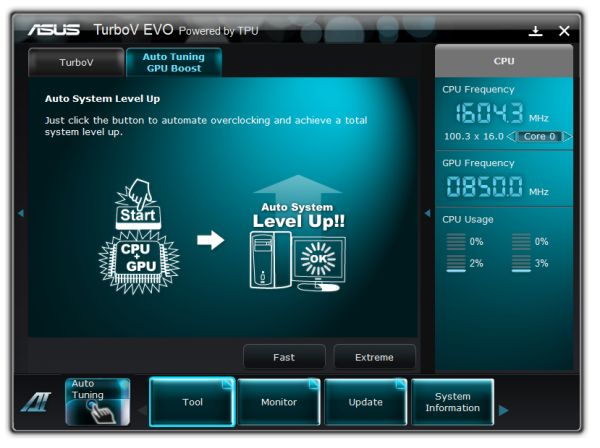
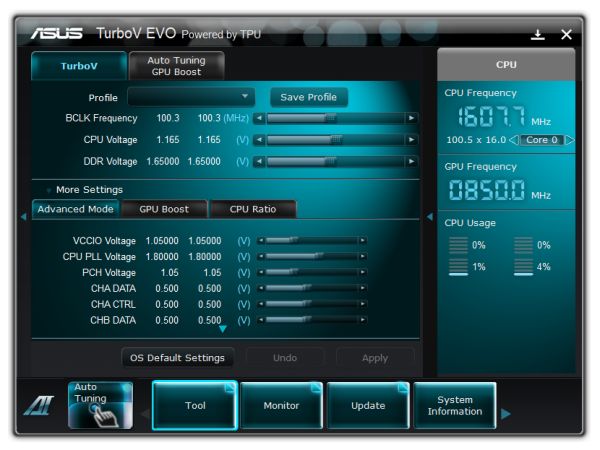
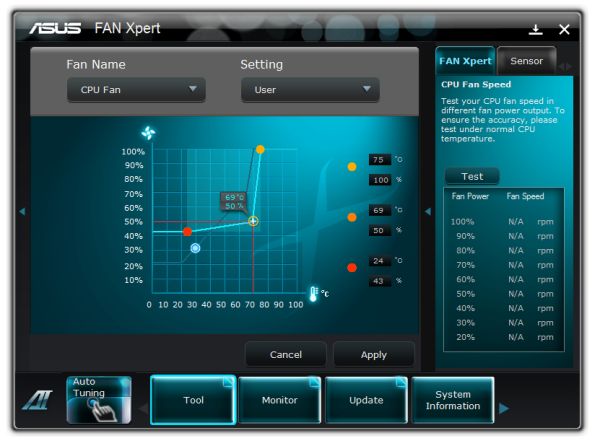






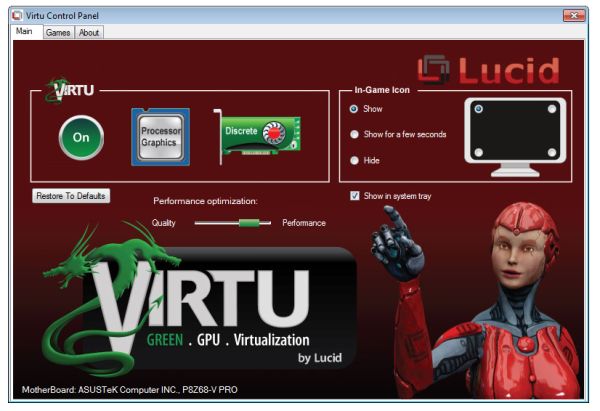
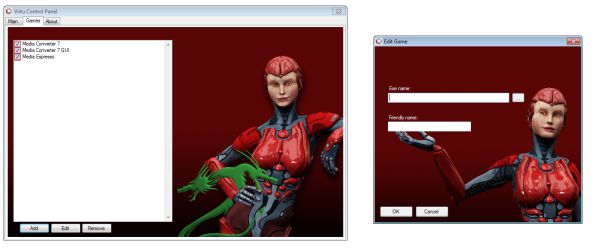









95 Comments
View All Comments
Irakusa - Thursday, September 29, 2011 - link
Not really, you're just limiting your thinking a bit. The whole reason I fill datacenters with blade servers and then oversubscribe every resource I can is exactly the same as what NeBlackCat is applying in smaller scale with this line of inquiry.Servers big enough to run hundreds of VMs on demand, but also able to dynamically adjust power, cooling, cost, and wear and tear on components. It's a good thing.
What do you think Intuit does at tax time, build a few thousand new web servers (hoping they have enough) and then leave them sitting around afterward waiting for next year's tax season? No, the reallocate resources where they're needed.
HaryHr - Wednesday, May 11, 2011 - link
Thinking like this you could also say no point in overclocking, just buy Extreme Edition CPU... but that's just not the same.L. - Thursday, May 12, 2011 - link
No.Overclocking = more power for the same mullah
Downclocking = less power for the same mullah
Downclocking = less power/watts
Buying another chip = less mullah, less power, less watts
Basically downclocking is a practice that should disappear shortly as the spectrum of power consumption on available chips has become wide enough, along with low power chips being more than enough for everyone's tasks excluding gaming and extremely rare computational tasks.
shawngmc - Friday, May 13, 2011 - link
Absolutely untrue. I repurpose my hardware - though I buy a new core (CPU/MB/RAM) yearly, I reuse my parts, cycling them through my desktop, HTPC, server, and project PCs or for family members.When I move parts from one usage to another, my demands change. My HTPC should have decent performance but be cool and quiet. My server needs good CPU performance (I run services in VMs) but I prefer energy efficiency there as well. Only my main desktop should be a power-hungry monster.
I'm about to move my i7-930 to my home server. Even with the copious VMs, I probably don't need full clock speed from it. So, since it'll be on 24/7, I want it to be energy efficient. Underclocking? Say, not a bad idea!
NeBlackCat - Wednesday, May 11, 2011 - link
In your opinion. I thought it was supposed to be a general review of the board. This isn't a teenage gamer site - plenty of people are interested in Sandy Bridge/Z68 as a powerful, yet power efficient, platform. And, for many of them, it's useful to know how much you can undervolt while maintaining stock clock, and so on. Some of us like our HTPCs to run as cool and quietly as possible most of the time, for example. It doesn't hurt to cover both sides - a couple of paras covering this is all that's needed.L. - Thursday, May 12, 2011 - link
HTPC Sandy Bridge ?Seriously, if you don't understand hardware and it's use, please just avoid spreading your convictions.
There is no reason for an HTPC to sport anything even remotely as powerful as 1/4th of a Sandy Bridge chip.
We have reached a level in IT equipment where the chip in your mobile phone can almost cater for all of your HTPC / NAS needs so just face it, spend $300 less and get what you need instead of a 99.999999% idle overpowered CPU. Save the planet, green stuff, whatever !
NeBlackCat - Friday, May 13, 2011 - link
Perhaps you don't understand that an HTPC is a 3W Sigma/Realtec media streamer to some, an occasional media encoding powerhouse (as well) to others, and something close to both for an increasing number of people.Vendors increasingly provide idle frugality but performance on tap - in the OS/BIOS, in the chipset (eg. simultaneous clock override/IGP) , in the CPU (eg. turbo boost), in the graphics susbsystem (eg. Virtu, Optimus, etc) and so on.
And these features ARE there in Z68/Sandy Bridge. The question is why they ARE NOT all there in reviews.
PS - that phone able to do HTPC/NAS duties (HD high profile H264, simultaneous transcoding/streaming/recording/multichannel, etc) for $300 less than an entry level Sandy Bridge sounds extremely interesting.
Can you tell me where to by one? Because the tiny TrimSlice Tegra 2 box I've had sitting here for a week (at a cost of $330, which is not $300 short of Sandy Bridge territory) doesn't even get close. Not that I expected it to.
shawngmc - Friday, May 13, 2011 - link
Exactly. I should be able to play games on my HTPC on occasion! Hell, Lucid Vertu theoretically sounds like a great solution - stick a decent GPU in and play modern games - Crysis 2, Portal 2, etc - on my 55" screen? Yes, please.Hell, I'll get some use out of my 3DTV with Nvidia 3DTV Play, now that it's FINALLY available.
xinaes - Wednesday, May 11, 2011 - link
"This segment is made to get the maximum out of your rig and not vice versa."In Soviet Russia, your rig gets the most out of you.
Sorry, couldn't resist.
Glad to see so many other people on the side of not wantonly burning power and still considering the idea of having a reasonably powerful machine.
NeBlackCat - Wednesday, May 11, 2011 - link
I want to get the maximum performance at the maximum power saving out of my rig. ;-)